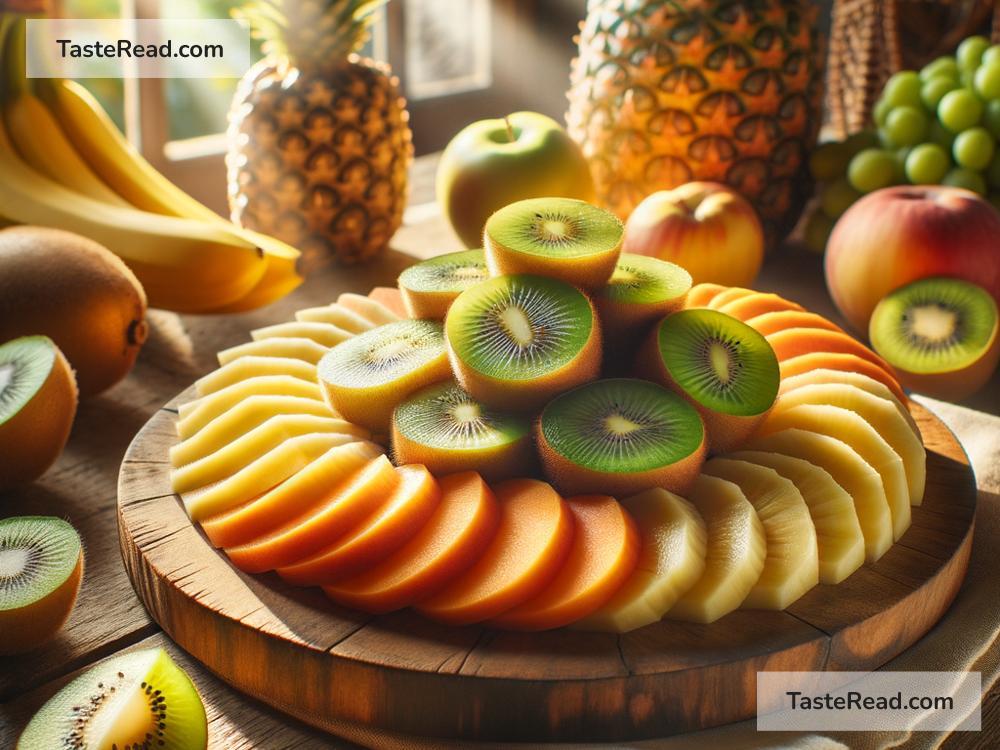How Kiwis Became a Global Sensation
The kiwi, a small, fuzzy fruit with bright green flesh, might seem ordinary at first glance, but it has a truly remarkable story. Today, kiwis are loved around the world for their sweet and tangy taste, vibrant color, and health benefits. However, this wasn’t always the case. The journey of the kiwi from a little-known fruit in China to becoming a global sensation is fascinating.
Where It All Started
The kiwi actually has its roots in China, where it was originally called the “Chinese gooseberry.” In this region, the fruit grew wild and was not seen as particularly special. It wasn’t widely cultivated or celebrated, and its small size and somewhat tough-looking exterior made it easy to overlook.
In the early 20th century, everything changed. Missionaries brought seeds of the Chinese gooseberry to New Zealand in 1904. These seeds were planted and eventually grew into the fruit we know today. In New Zealand, the farmers recognized its potential. They worked to perfect it by improving its taste, growing it in larger quantities, and even making the fruits bigger and easier to handle. Over time, they turned the Chinese gooseberry into something extraordinary.
Rebranding the Kiwi
While New Zealand worked on cultivating the fruit, there was another challenge: marketing it globally. The original name, “Chinese gooseberry,” didn’t seem exciting enough. In the 1950s, New Zealand growers decided to rename the fruit after their national bird—the kiwi. The kiwi bird, like the fruit, is small, brown, and unique to New Zealand. This clever rebranding gave the fruit a distinctive identity and helped it stand out among other fruits.
The new name worked wonders. It wasn’t just catchy; it also made people curious. When people heard “kiwi fruit,” they wanted to know more. It made the fruit feel exotic and special, and shoppers started buying it.
World Domination Begins
By the 1970s and 1980s, New Zealand began exporting kiwis to countries all over the world. People in Europe, North America, and Asia couldn’t get enough of its fresh, juicy flavor. Unlike many other fruits, the kiwi had a unique combination of sweetness and tartness that made it versatile. You could eat it raw, add it to fruit salads, use it to decorate desserts, or even mix it into smoothies.
At the same time, scientists discovered that kiwis were good for your health. They are packed with vitamin C, fiber, and antioxidants, which strengthen the immune system, improve digestion, and promote a healthy heart. This health benefit made kiwis even more popular among people who wanted nutritious snacks.
New Zealand growers also had strong marketing campaigns. They promoted the fruit as both tasty and healthy, making it desirable for people of all ages.
Kiwi Goes Global
Soon, other countries started growing kiwi fruit too. Italy became one of the world’s leading producers, and now countries like Chile, Greece, and the United States also grow huge quantities of kiwis. New Zealand remains a major player in the kiwi industry, but kiwis are no longer exclusive to the region.
The rise of global trade made it easier for kiwis to reach supermarket shelves in every corner of the world. Today, you can find kiwis in almost any grocery store, whether you’re in Tokyo, Paris, or Los Angeles.
A Must-Have Ingredient
Kiwis have also become a favorite ingredient in kitchens worldwide. Their bright green flesh makes them a popular choice for colorful fruit platters and garnishes. Their unique flavor pairs well with both sweet and savory dishes. Kiwis are used in salads, tart desserts, and even marinades for meat. They’re especially popular in tropical drinks and smoothies, where their tangy taste shines.
In addition to their culinary appeal, people love how convenient kiwis are to eat. They can be sliced up easily or even scooped out with a spoon. Some people enjoy eating them whole, skin included—a trend that’s gaining popularity because the skin is full of fiber.
A Symbol of New Zealand
Though kiwis are grown in many countries today, New Zealand still proudly claims the fruit as a national symbol. It’s a part of their cultural identity and history. In fact, New Zealand’s global kiwi export brand is called Zespri, and they continuously work to innovate, market, and improve the fruit. They’ve even developed different varieties like the golden kiwi, which has yellow flesh and a sweeter taste compared to the traditional green kiwi.
What Makes Kiwi So Special?
The rise of the kiwi isn’t just about its flavor or health benefits. It’s also about storytelling, clever branding, and adaptability. New Zealand turned an ordinary fruit into something extraordinary by giving it a unique name, developing better growing techniques, and sharing it with the world.
Today, kiwis are more than just a fruit—they represent vibrancy, good health, and global connections. Whether you enjoy them for their taste, their nutritional value, or simply because they’re fun to eat, there’s no doubt that kiwis have earned their place as a global sensation. Their journey from China to New Zealand to the world is a reminder of how even the simplest things can become extraordinary with the right care and creativity.


